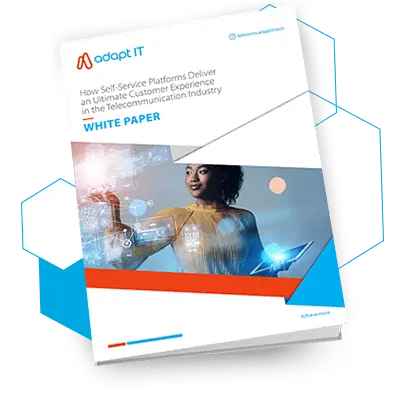Table of Contents
ToggleThe discussion around eSIM technology is trending globally. This is primarily due to digital transformation and a move towards catering to the expanding needs of consumers. The question is, are all markets, especially those in Sub-Saharan Africa, ready for this move? Take a look at our point of view on this specific topic below.

The eSIM disruption globally
The subject of eSIM is currently on everyone’s lips and, this is due to the advantages that this type of SIM technology offers in terms of 5G and IoT. Before we get into this, it is essential to understand what eSIM is.
eSIM stands for embedded SIM and differs from traditional SIM cards. Traditionally your average SIM card can be removed and replaced in new devices. eSIM cards differ from this and are integrated permanently into a device. What makes this so efficient is that an eSIM is smaller than your nano-SIMs and can be integrated into IoT devices such as smartwatches, fitness bands and more. These innovative eSIMs are also rewritable and compliant with all operations. They can be managed remotely using remote SIM provisioning, which makes managing your IoT ecosystem, device and data management much easier, especially where businesses are concerned.
So how big do we expect the eSIM market to grow? According to GSMA, they project that by the end of 2025, there will be 2.4 billion eSIM smartphone connections globally. This equates to 33% of the total number of smartphone connections. GMSA also estimates that by the end of 2022, there will be half a billion eSIM smartphone connections, which is 10% of the market.
When looking at these statistics, one can understand why there is so much talk about eSIM technology. Two of the elements fueling this evolution are 5G and IoT adoption.

eSIM, 5G and IoT: What is the connection?
The discussion around 5G and eSIM often go hand in hand for several reasons. These include how eSIM further facilitates connection to 5G networks, enhancing accessibility and providing customers with added convenience and value. What do we mean by this?
eSIMs play an essential role in 5G networks and ensure connectivity like their nano, micro, mini and full-size SIM card predecessors. They still identify and connect devices to GSM, but the main difference is that an integrated 5G capable eSIM offers more. Customers will be able to switch cellular carriers without needing to switch SIMs or visit a provider. When travelling internationally, an eSIM will seamlessly utilise international GSMs, making connectivity effortless. This innovative technology can change how customers connect and provides enhanced connectivity from anywhere in the world without needing to buy a new SIM. These capabilities add value and change the way we interact, communicate, and connect on every level, professionally and personally.

From an operator perspective, this opens up new revenue streams and digitisation options for consumers. With eSIMs, operators will be able to upsell products and packages to their customers over and above a typical smartphone plan. eSIMs make it possible to allow operators to add companion devices and associated cellular connectivity devices to the main plan more efficiently and quickly than traditional SIMs. Such added value and convenience significantly impact customer experience, which is one of the driving forces behind success within this saturated market.
eSIM technology, as mentioned above, will also be integrated into various IoT solutions. Mobile devices and automobile telematics systems use them already. When 5G adoption becomes a standard globally, these devices will have the immense processing power and will rely on their eSIMs to connect to the network.
In this way, eSIMs will play a critical role in the adoption of 5G and the implementation of IoT solutions. Just think about how the creation of a connected smart city will rely on eSIMs and their ability to connect the network for IoT systems to work effectively.

Are all markets ready for the eSIM evolution, especially those in Sub-Saharan Africa?
The simple answer is no, not yet. Sub-Saharan Africa differs from many markets globally, especially from those in developed countries. From our Adapt IT Telecoms perspective, the main difference here includes the lack of 5G infrastructure, low adoption rates, and low awareness of eSIM technology within this market.
According to GMSA’s Mobile Economy 2021 report and the image below, you will see that within this specific region, 2G and 3G technology is still set to dominate over the next five years, with the adoption of 4G and 5G still being marginally small. 5G infrastructure within this region is not as readily available and set up as in other markets, which is also why the adoption of this new network is slower.
What is incredibly interesting to note within this report is the increase in smartphone adoption, which is set to reach 64% by 2025 in Sub-Saharan Africa. This is promising and shows that things are moving in the right direction and that there is an opportunity to start utilising eSIMs within this market – although this shift is going to take time.

What role are operators playing in developing and pushing this new eSIM technology within this market? According to this report, not as much as possible, especially since Sub-Saharan Africa shows the lowest consumer adoption and rollout rate by operators. Since the infrastructure and adoption of new technology in this region is slower than in other markets, many operators have not put in the work to create awareness and educate their end-users on eSIM technology and its benefits.
The question is, do you sell something that is far ahead of where your market currently lies, or do you rest on what you know is working in your market? Our answer is to do a little of both.
Technological advances are happening every day, and for you to stay ahead competitively, you need to ensure that you are staying on top of these advances and that you have these services available for the customer segments that want them. With this being said it also depends on your customers, their needs and what they are looking for. This means that as an operator, you need to do your research and examine your specific market to see if developing, selling, and utilising this technology is going to benefit you in terms of profitability and growth.
Conclusion
From the above, it is clear that eSIM technology has many benefits for organisations, end-users, and operators. Although making significant inroads in markets globally, this technology is not seeing fast adoption in Sub-Saharan Africa. Operators within this region need to decide if this technology should be a focus or concentrate on the various other services their customers are requesting. From our perspective, it is essential for operators to keep their eye on the pulse of new technology and to make the shift towards adopting these new technological innovations. The question remains, when is the best time to do this? We would like to know your thoughts and opinions on this subject, so engage with us and let’s open up the conversation.

Add Value To Your End Users
Explore the intricate details of NextGen v.Services and how It provides a future-proofed, cloud-ready solution that can adapt to digital transformation trends and facilitates fast and convenient implementation of new services.

As the Global Head of Marketing and Business Development with 20 years of experience, Agnieszka’s expertise lies in the practical implementation of digital and traditional marketing strategies for B2C and B2B companies. Through her long-term, client-focused, strategic approach, and branding experience, she continues to develop innovative marketing plans that yield significant results. Now working in the SaaS industry, she oversees a multitude of solutions within the telecommunications industry including Customer Experience & Self-service, VAS, NextGen, IoT, FinTech, and Advanced Analytics.




